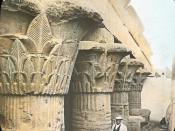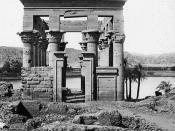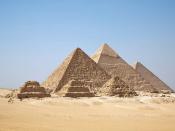From stick figures in the sand and the earliest animals painted and carved in stone, people worldwide have reacted to the world by making images. The fundamental goal of art, especially in the past, was to convey meaning and express important ideas, revealing what was significant to every society, by arresting images. In recognizing the subject matter of any painting, you have to look at the artist's intentions, which are regularly connected to social conditions, national or global issues and the demands of the public. To avoid the pitfalls of judging all art by our own personal experiences and subjective views, we have to learn the background surrounding the artist when the work was created- the social and historical conditions of the time and the philosophical views which affected the way in which the artist viewed the world. (Russell, 1984)
Art is as varied as the life from which it springs and each artist portrays different aspects of the world they know.
Briefly, it may be said that artists paint to discover truth and to create order. The creators of art make discoveries about the wonders and beauty of nature and the dignity and nobility of man. They give these concepts an order to help us understand life in a greater depth. In understanding the history and style of any period of art, we have to comprehend the balance between social and political development of that particular era. Within each and every period, development of style is affected by a response to particular philosophies, social and economic conditions, political and spiritual influences. World Issues have been reflected in art throughout the ages, and this premise is supported by three particular periods of time. This is clearly evident when viewing ancient art, where symbolism was an important part of society. Also,



Essay comment
very good essay about art in the medievil times very informative
4 out of 4 people found this comment useful.